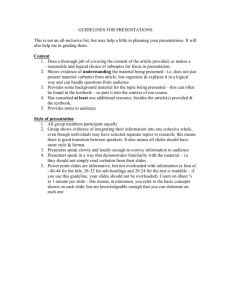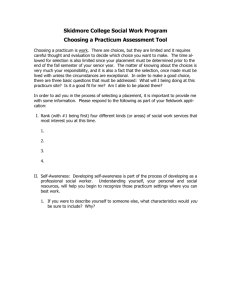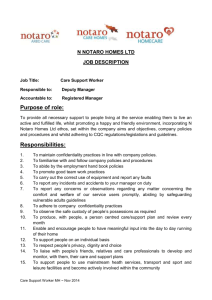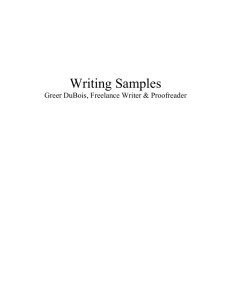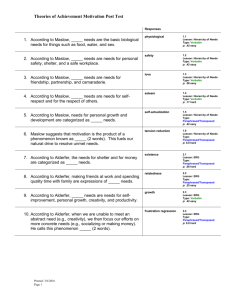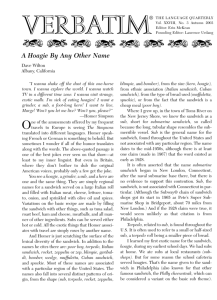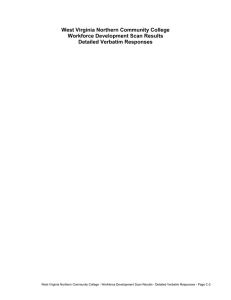MSW Practicum Student Learning Assignment Inventory Student's
advertisement
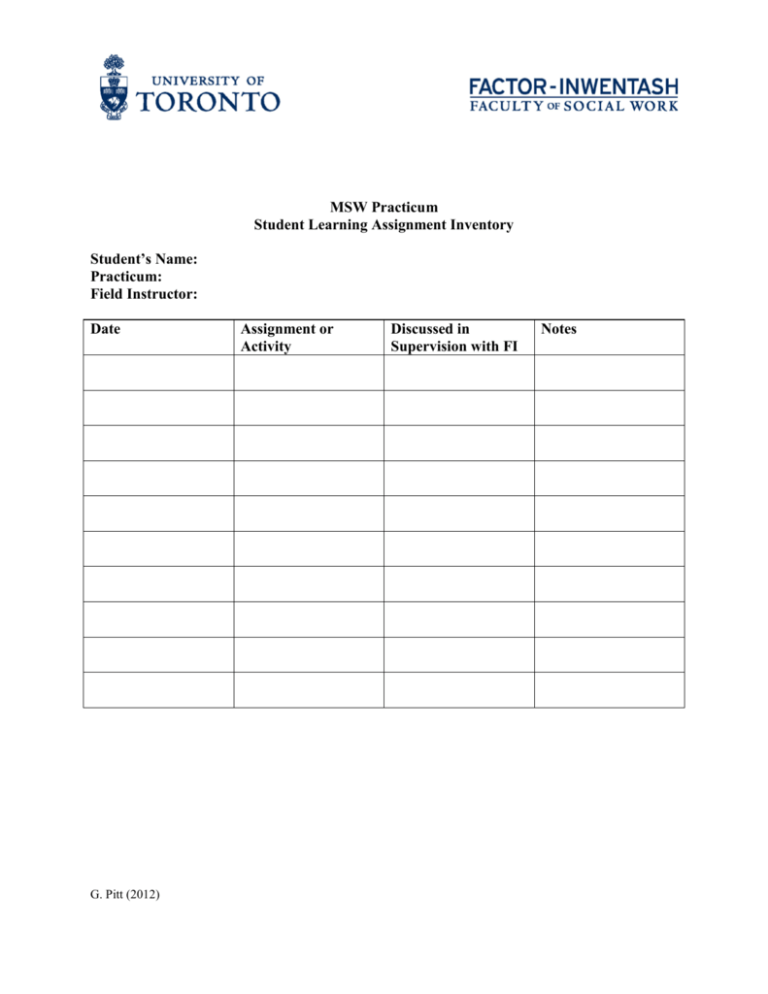
MSW Practicum Student Learning Assignment Inventory Student’s Name: Practicum: Field Instructor: Date G. Pitt (2012) Assignment or Activity Discussed in Supervision with FI Notes MSW PRACTICUM POSSIBLE FORMAT FOR PROCESS RECORDING 1. Purpose of Session Provide an indication of purpose for the session maintaining confidentiality. Include if this was an initial session, or a subsequent session and reasons for the session. Identify your purpose/role during the session. 2. Observations Provide a brief description of what you observed in this session, including what you observed that was different from the previous session. For example perhaps you noticed the individual was quite agitated in the session which was different from the previous session. You could also indicate that the individual’s agitation lessened as the session progressed. Also include observations about you as a social work student in the session. 3. Analysis of Skills Used (maintaining confidentiality) Description of the Client’s Content (facts, thoughts and feelings) *See Note below Description of the Social Worker’s Content Corresponding with the Client’s Content *See Note below Analysis of SW Skills Used *Note – because you are not doing a verbatim transcription of a session, in process recording you provide narrative descriptions (the gist) of what was said by you and the client. 4. General Assessment of the Interview Provide a general assessment of the interview. Below are some of the areas you could reflect on: • • • • Impressions of your effectiveness during the interview. What did you do well? What would you do differently? Summary of client/worker goals and plan for future sessions 5. Notes from Discussion of Tape Analysis with Field Instructor G. Pitt (2012) 2 MSW PRACTICUM POSSIBLE FORMAT FOR TAPE ANALYSIS 1. Analysis Template (maintaining confidentiality) Client Content (verbatim) Analysis of Client Content Social Worker Content (verbatim) Social Work Competencies - Used Alternate Responses (verbatim) and Your Comments Client Content Write verbatim what the client said in the session, not a paraphrase of what you think was said. Analysis of Client Content Client content usually consists of different components and can be accessed along multiple dimensions. The following summary may help you to identify different components of client narratives: a) Factual content: Facts and information provided by the client • Important facts (e.g., I am the sole caregiver for elderly parents) • Relevant information (e.g., I am a full time student) • Action (e.g., I got out of hospital, and returned to work 6 months later) • Events (e.g., the storm flooded my house, forcing me to live in temporary housing) b) Motivation: Very often client narratives communicate their needs, wishes, goals, or desire. • Clear direct statement (e.g., I want to pass my exams so I can graduate) • Negative statement (e.g., I don’t think he should just walk out like that) • Needs implied (e.g., I feel so isolated and helpless here) c) Cognitive structure and/or style: The way the client thinks • Beliefs, including assumptions about how the world works (e.g., She would have no future if she didn’t finish university) • Thinking can be open and flexible, or rigid and extreme (e.g., Marrying someone outside of our community is unthinkable, and no one in the community will accept it) • Logical coherence, attribution, or inference (e.g., He never cleans his room because he likes to aggravate me) Adapted by G. Pitt (2012) from SWK4103/SWK4105 Course Material 3 d) Affect, emotional content: What and how is the client feeling • Explicit verbalization (e.g., I’m so mad; I feel this deep pain inside) • The emotional tone of the verbalization • Non-verbal behaviour (e.g., clenched fist, crying) When appropriate, pointing out the incongruence between different dimensions of the client’s presentation (clenching fists and speaking in intense tone while verbally denying feeling of anger) may be useful in the analysis. Worker Response This is the verbatim response to the client’s immediately preceding content. It is a quick way to check if your response verbally was appropriate with the client content. Competencies and Skills Illustrated In this section indicate the appropriate social worker competencies and skills which you used. It may be helpful to link theory to practice. Alternate Responses and Comments This is an opportunity to show a conceptual and behavioral understanding of how to improve your work. On reflection, what do you need to change or do differently? 2. General Assessment of the Session Provide a general assessment of the session. Below are some of the areas you could reflect on: • • • • Impressions of your effectiveness during the session. What did you do well? What would you do differently? Summary of client/worker goals and plan for future sessions 3. Notes from Discussion of Tape Analysis with Field Instructor Adapted by G. Pitt (2012) from SWK4103/SWK4105 Course Material 4 5

